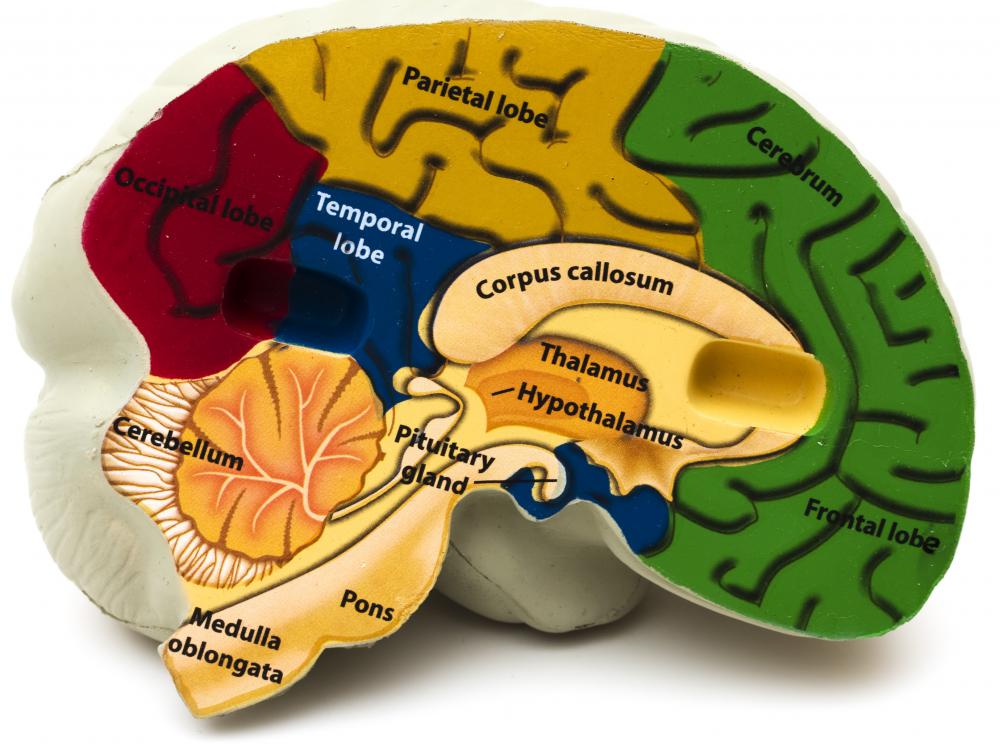At WiseGEEK, we're committed to delivering accurate, trustworthy information. Our expert-authored content is rigorously fact-checked and sourced from credible authorities. Discover how we uphold the highest standards in providing you with reliable knowledge.
What is Wallenberg Syndrome?
Two vertebral arteries supply blood to the medulla and cerebellum, which are areas of the brain located above the brain stem. When one or both of the arteries becomes blocked, due to a blood clot or buildup of plaque, a stroke can occur. Because of the location of the stroke, a variety of symptoms occur, which are collectively known as Wallenberg Syndrome.
Damage to the medulla, cerebellum, or both occurs as a result of lack of blood flow. The risk factors for having a stroke include, being overweight, inactive and having diabetes. Addition risk factors include, high blood pressure, elevated cholesterol levels and smoking.

The cerebellum is the area of the brain which controls eye movement, balance, and coordination. The medulla controls swallowing, speech, taste and facial sensation. Symptoms of Wallenberg Syndrome may depend on whether the medulla, cerebellum, or both areas of the brain were damaged.
A diagnosis is made after a review of symptoms and a physical exam, including a neurological exam. Usually a computerized tomography (CT) scan will be done to determine if a stroke occurred in the brain. A magnetic resonance imaging (MRI) scan may also be ordered, because it is more sensitive and able to detect small strokes.

Treatment may include administering blood thinner medications to prevent further strokes from occurring. If swallowing is a problem, a feeding tube may need to be inserted to allow for adequate nutrition. Pain medication may be given to relieve facial pain. Other Wallenberg Syndrome treatment is often geared to improving functioning and quality of life.
Speech therapy may be needed to help overcome difficulties talking, as well as to help patients with swallowing problems. Occupational therapy may be recommended to help improve daily living skills. Physical therapy may also be needed to help with balance and gait problems. Rehabilitation therapies may be given on an outpatient basis or patients may be admitted to rehabilitation facilities while undergoing therapy.
The prognosis for individuals with Wallenberg Syndrome partly depends on the extent of damage to the brain and the age of the patient. Some patients recover functioning after several weeks. Others may have long-term disabilities.
AS FEATURED ON:
AS FEATURED ON:












Discuss this Article
Post your comments